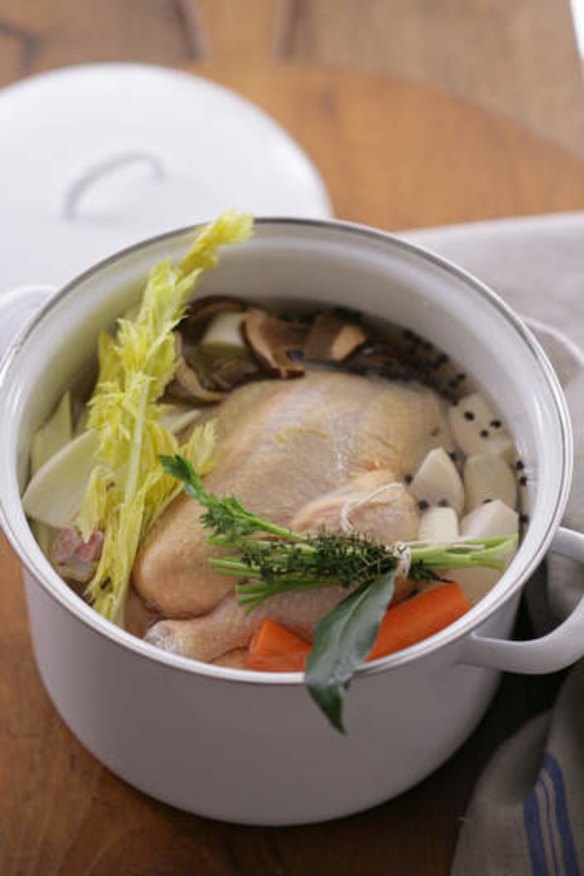Brain food

I have been watching Gordon Ramsay's Ultimate Cookery Course on YouTube, where he talks about the different characteristics and flavours from three breeds of poultry: label anglais, black leg and poulet de Bresse. Can we get them here in Australia? E. Sands
Our poultry industry revolves around just a few breeds of commercial chooks: cobb, ross and arbor acres. Even our best organic and free-range growers rely on these commercial breeds. We are yet to see the old-fashioned breeds raised commercially in Australia. That said, there are a few bright lights on the chook-taste front. You can buy black-skinned silky bantams in suburban Asian markets and butchers. These birds have a supple texture and deep poultry flavours. Also, some small and mid-sized growers are planning the approved importation of fertilised eggs from old-fashioned chicken breeds from Europe, so a new wave of flavoursome chicken breeds could be just a few seasons away.
When making Anzac biscuits, I find it hard to measure out golden syrup accurately in tablespoons as directed by the recipe. M. Rowe
When I was 14, I worked for a non-compromising cook from Lancashire. She loathed waste and hated seeing junior cooks spreading golden syrup across ourselves and the kitchen. She taught us various ways around getting sticky golden syrup out of a tablespoon using a smaller spoon. When flavour didn't matter that much, she would spray the spoon with kitchen spray. The golden syrup didn't stick. When she found out aerosols were depleting the ozone layer, she reverted to heating the bowl of a metal measuring spoon over the vent of the oven. The hot bowl of the spoon would make the syrup runny. The other method she adopted was to weigh the syrup. While a cup of water weighs 250 grams, a cup of golden syrup or honey weighs about 320 grams. She would place the bowl of ingredients on the scales and carefully pour the golden syrup directly into the bowl. A tablespoon of honey or golden syrup weighs slightly more than 20 grams.
I want to live animal product-free so am looking to substitute agar agar for gelatin. What is the formula for substitution and what do I need to look out for? J. Anderson
None of us would have eaten frog in the pond if it had been described to us as artificially coloured and flavoured boiled-down animal skins. That's what jelly is. Gelatin is an animal protein, made of long, coiled helixes, and when dissolved in hot water the protein strands unwind. As the solution cools, the helixes recoil and form a mesh that traps water to create a gel. That gel point is around the 40-degree mark. This means that when you eat jelly, it melts in the mouth. Agar agar, however, is made from a carbohydrate extracted from boiled seaweed that, when heated with water and cooled, traps water to form a jelly. Its melting point is 85-degrees. This means jellies made from agar agar don't melt in the mouth - they tend to be more crumbly and opaque. While you only need about 1 per cent agar agar to form a gel in water, you will need about 3 per cent gelatin to achieve the same firmness.
Can I freeze ham? V. Buchanan
Yes, you can freeze ham. You can also freeze your kitchen sponge alongside your ham as it will be just as appealing when both are defrosted. Ham is pork plumped up with water filled with salt and sugar. When water freezes, it expands. Think back to those years of putting antifreeze in the radiator when you went to the snow so your hose wouldn't rupture. That freezing and rupturing is what's going on inside your ham if you put it in the freezer - the water expands, the cell walls burst, water leaks and you're left with dry, fibrous bits. It will still be good for using in soups and dishes where flavour is more important than texture.
brainfood@richardcornish.com.au
Twitter: @FoodCornish
The best recipes from Australia's leading chefs straight to your inbox.
Sign up- More:
- Brain food
